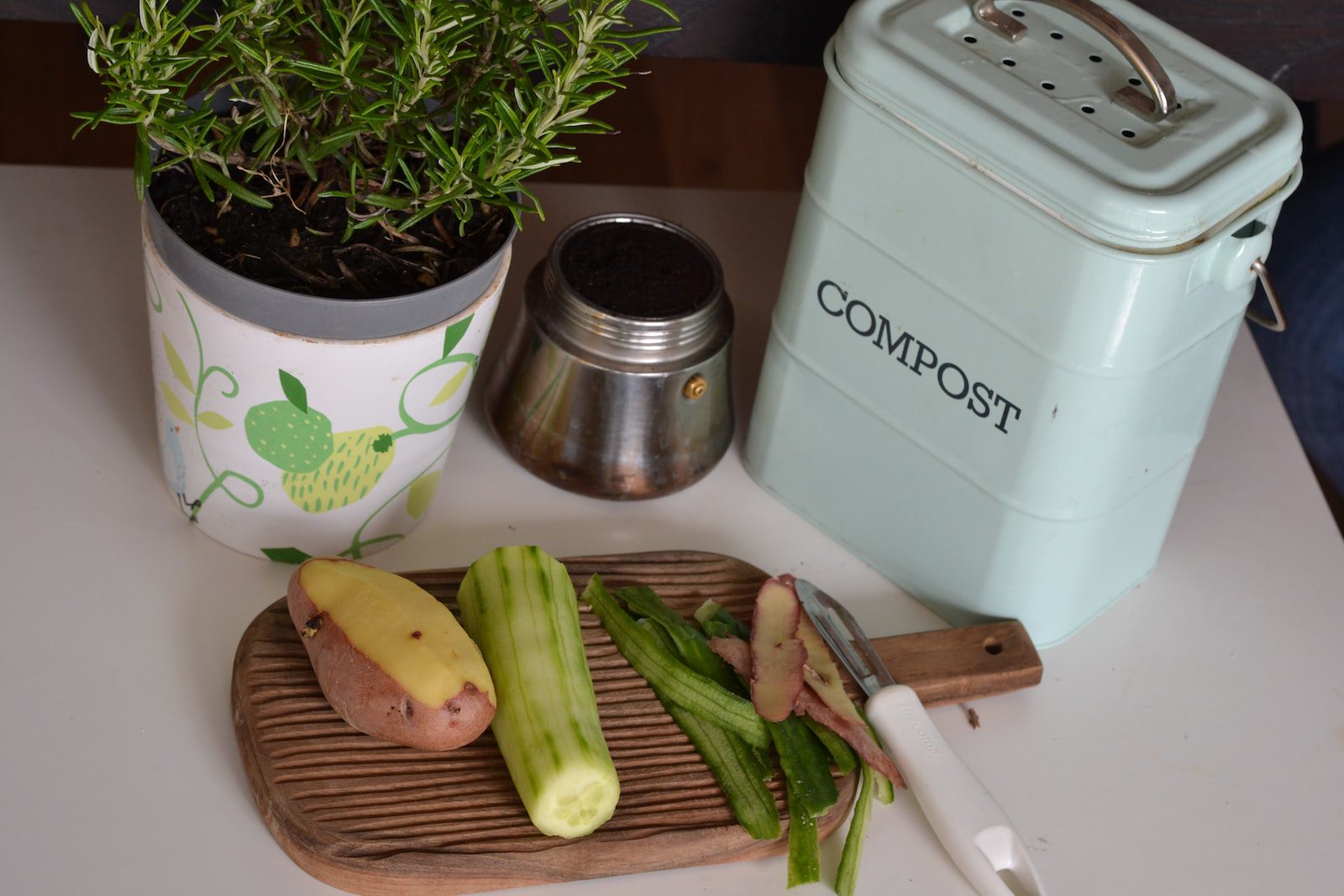Composting is the single most impactful zero waste change you can make to reduce your emissions. Food scraps that live in a landfill instead of being composted end up emitting methane—a greenhouse gas that is about 30 times more powerful than CO2. When you compost, you create nutrient rich soil instead of powerful greenhouse gasses.
- Get a convenient storage container: Cooking is a breeze when you have an easily-accessible, conveniently-sized container where you toss all of your vegetable scraps. I have found that a washable container with a tightly-sealable lid is ideal for storing my compost. I use a plastic shoebox that had been in my closet for years. When I am cooking, I just drop vegetable scraps into the container and then put the lid back on.
- Store food scraps in the freezer: Even with a tight lid, food scraps can start to smell if you don’t have a way to empty your compost container frequently. For this reason, I keep my compost container in my freezer. The frozen scraps don’t rot, so I have a longer window between compost bin runs (which is especially nice since I compost at a community garden a couple miles away from home).
- Collect produce stickers: Buying produce at a farmer’s market or environmentally-conscious store might mean that you can completely avoid stickers on your produce. I, unfortunately, still have not found a way around the produce stickers. I keep a piece of scrap paper on my fridge and collect stickers there. Once a piece of paper is filled you can fold it up and add it to your collection of trash. Or maybe you could frame it as an art piece!
- Build onto existing routines: Make composting part of your daily or weekly routines by finding joy in the process. A trip to the community compost can be paired with a work-out, or turning the compost in your backyard can be part of an enjoyable afternoon in the garden.

